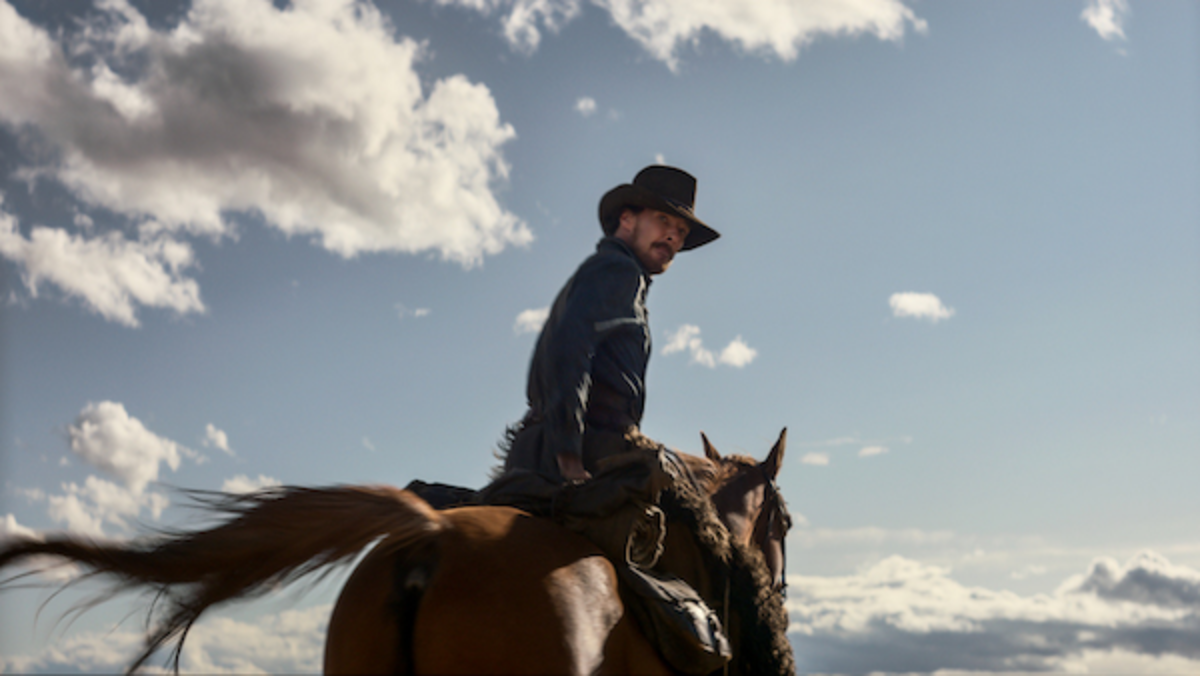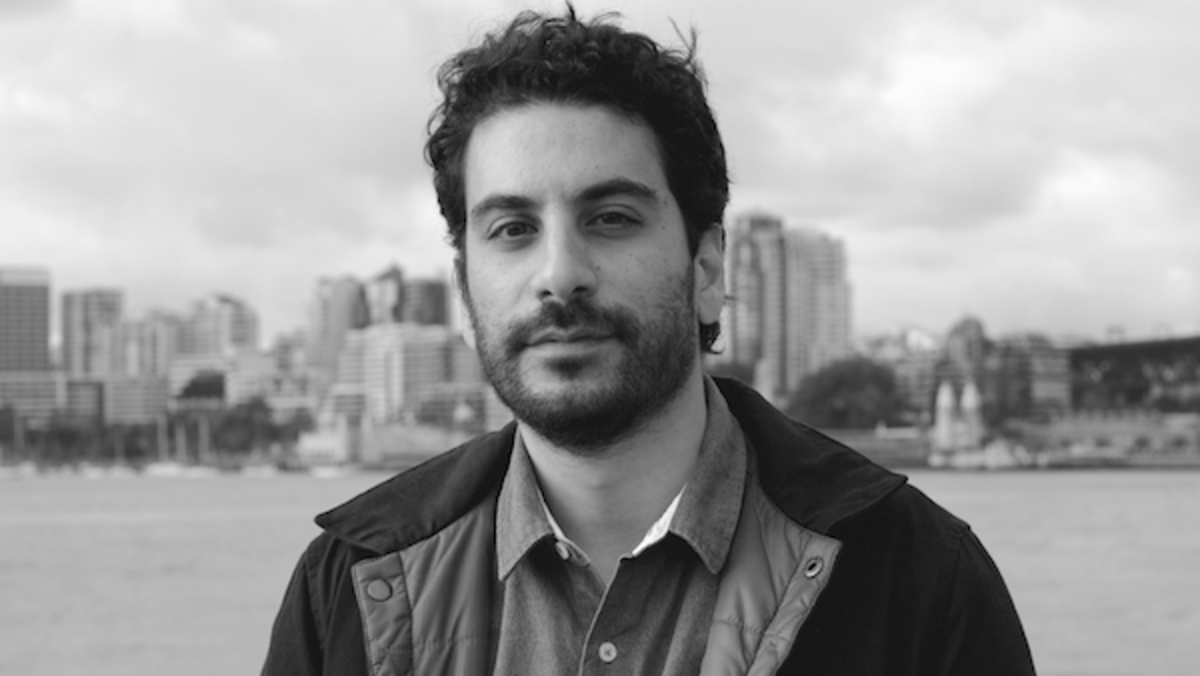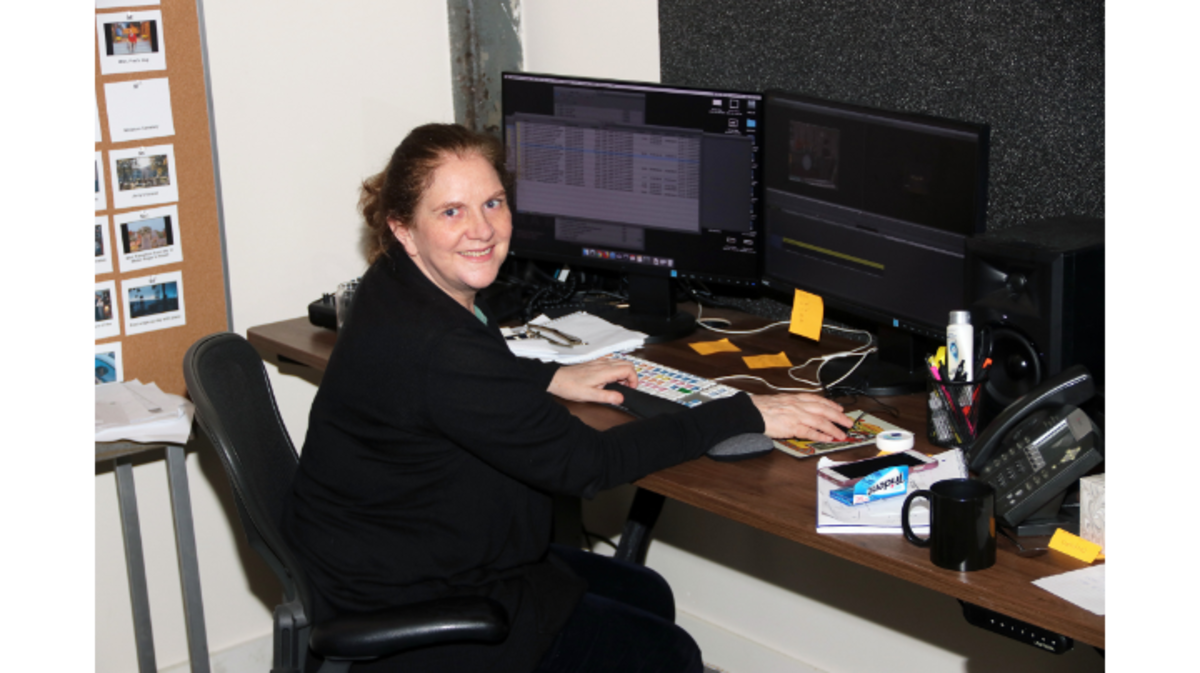In this wide-ranging interview for Script Magazine Kerstein talks about his love of editing musicals, his collaborations with director Jon M. Chu, finding the emotion in scenes, and so much more. No doubt, Kerstein’s enthusiasm and passion for films is contagious.
Myron Kerstein, ACE, is an Oscar-nominated and ACE Eddie Award-winning film and TV editor, producer, and director. His credits include tick, tick…BOOM!, In the Heights, Crazy Rich Asians, Garden State, Girls, House of Lies, Little Fockers, Nick and Nora’s Infinite Playlist. Kerstein made his directorial debut in Season 2 of the AppleTV+ drama Home Before Dark.
![[L-R] Cynthia Erivo as Elphaba and Ariana Grande as Glinda in Wicked (2024).](https://scriptmag.com/.image/t_share/MjEwOTc4NDA0Mzc0MTYxMzg1/241110-wicked-movie-600.jpg)
Kouguell: You’ve edited several movie musicals, including In the Heights and tick tick…BOOM!. (I interviewed screenwriter Steven Levenson for this publication).
Do you have a background in music? What drew you to this genre?
Kerstein: I had a very loose background in music. As a teenager, I played drums and saxophone in bands. I always had a love for music. I remember as a kid watching the Wizard of Oz, of course. The Music Man had a big impression on me as a kid. As a teenager, I loved films like Grease and Purple Rain. I loved movies that had lots of music in them, as well as music videos in the 80s.
When I started getting into the film business, I gravitated to that genre, working on Camp and Hedwig and the Angry Inch as an assistant editor, Garden State, which had a big soundtrack, and Nick and Norah’s Infinite Playlist – all these films were training for me.
When I met Jon Chu he actually wanted to make a musical together. I was really excited because I had put out in the universe that I wanted to work as a sole editor and it came at the right time. Jon and I would say we’ve been training for this all our lives. The truth is, it really did sort of build over the course of 20 years.
Kouguell: Wicked parts one and two are the fifth and sixth projects you worked on with director Jon Chu. Tell me about your collaboration.
Kerstein: It’s been a bromance. I love him like a brother. We found instantaneous connections on how to make films and television. It’s like you’re a kid again having this childhood wonder approach to making things to put out in the world. And, to have a real message and joyful presence in the world.
On Crazy Rich Asians we started to understand each other as creative artists and how we approach things. That trust began quickly and built with that film and with In the Heights it kept building; we were raising each other’s bar. We did that on television as well. Television has a certain speed because of schedules, and you’re thinking on your feet.
It’s been a dream come true. Jon changed my life. In Wicked there are themes about how a person changes you for the good or how they have the handprint on your heart. And he really has. It’s been an incredible journey. I’m really excited that people are responding to this movie because it is all the culmination of the things we’ve done together and with his collaborators Alice Brooks and Chris Scott, it’s an amazing collaboration.
Kouguell: You immersed yourself in Wicked by reading early drafts of parts one and two of the screenplay, watched the stage production on Broadway several times, re-watched the 1939 version of The Wizard of Oz, and read Frank Baum’s source material. How did this influence and inform your editing choices while capturing the spirit of this project?
Kerstein: It’s all about feeling and emotion for me. When I finished the first script I literally cried. I never had a more visceral reaction in my life. And that was very similar to seeing the original stage production. I watched it with my six-year-old son and then rewatched it when Broadway opened again after the pandemic. It was like a rock show, like Beatlemania. What I knew is that in order for the films to work, the audience had to connect emotionally the way I was connecting emotionally to the source material. I was chasing that the entire time, I needed to make sure that whatever my choices were I was listening to my heart.
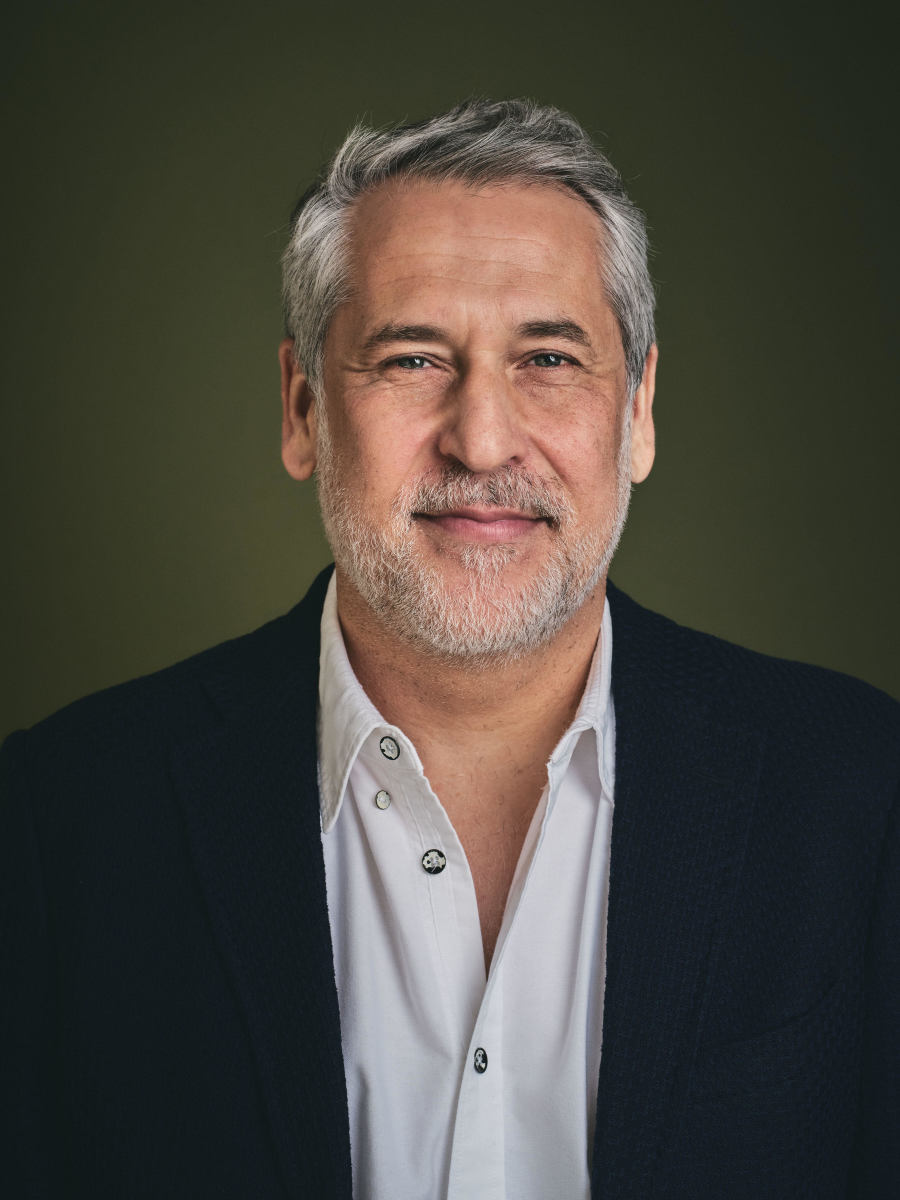
There were 250 hours of footage of the two movies. I took note of my emotions. It all goes back to how I responded to that source material, and how I can best tell the story dramatically.
Kouguell: The editing was seamless, moving from live-action to visual effects.
Kerstein: Our job as filmmakers is to have a steady grip on the audience, there’s a suspension of disbelief that shouldn’t stop. The second that happens you’ve lost them. Keeping that firm grip and letting the audience know that we have you takes a lot of work between finding the right pace, to letting things breathe, to letting the emotion feel earned by the performances and getting carried away and immersed in that experience.
Kouguell: There is so much thematically going on, as well as shifts and tones and various genres, yet I never felt like I had whiplash.
Kerstein: We’re throwing a lot at you, a lot of tones – comedy, drama, melodrama, action, and horror – but if we keep that firm grip on the storytelling and the emotion, we felt that the audience would go along for the ride.
Kouguell: The screenplay by Winnie Holzman, had the lyrics written into the pages.
Kerstein: It was very helpful because my approach with cutting musicals is not to treat lyrics any different than dialogue so that it feels seamless. The storytelling doesn’t just stop because the characters stop singing. It’s just another way for the characters to express themselves. It was really helpful for me to read along and listen to the Broadway soundtrack, and to read along to understand the storytelling. There’s a lot packed into the lyrics and vocals. Otherwise, I think you’re just like, OK the song starts here and we’ll see you on the other side. Working this way I had a real understanding about what these characters are talking about through these songs, and how it works dramatically in the scenes.
Kerstein: There were a few moments like when Elphaba was flying around that we got to steal another live vocal from another live take, but they’re all doing it live the entire time. They were 100 percent thoroughbred; they are the best singers on the planet.
It was just an abundance of riches having all this dialogue/vocal/singing mixed into one another.
Kouguell: There must have been some challenges cutting the live vocals.
Kerstein: Editing musicals is the hardest genre; nothing compares to cutting live vocals that are, by the way, not always on a musical grid. Jon likes to start and stop songs, and build up anticipation, and mess with audiences’ expectations within a song. He wants to keep it fresh for the audience. He wants to build dramatic moments like he did in “Defying Gravity” and chapter things sometimes to give it a sense of place and setting. It’s super challenging, it’s a lot of balls in the air. I’ll have multiple tracks of different vocals, live piano, instrumental tracks, click tracks. There are lots of things I’m keeping track of and at the same time, I want it to all disappear into whatever the dramatic scene is.
And on top of that, there is VGX and world building, and CG goats and CG animals. Thank goodness I didn’t have a flying monkey singing too! And then none of this matters, you need to make sure that it all disappears and it becomes this wonderful cinematic experience, and it did.
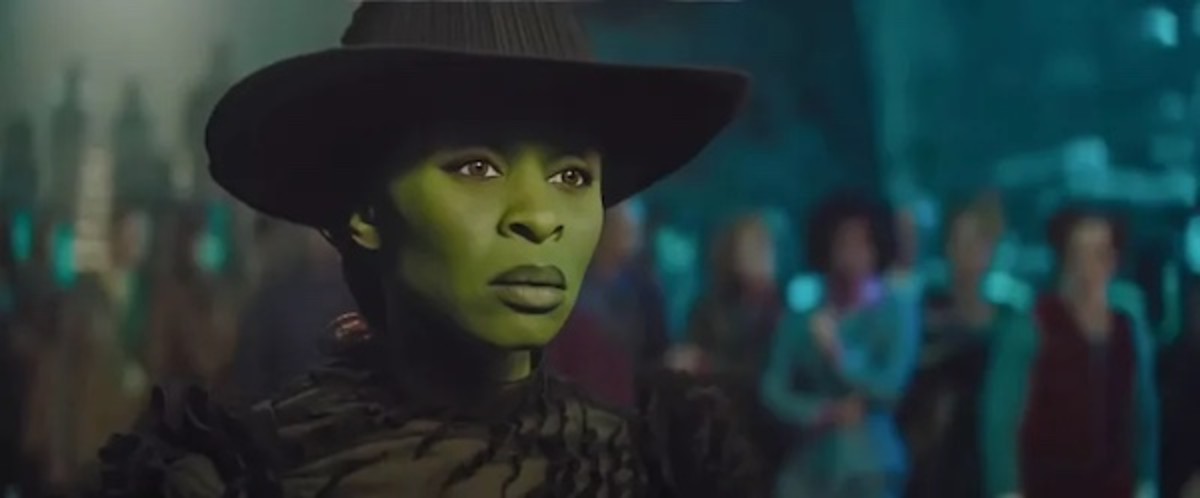
Kouguell: Let’s talk about the Ozdust ballroom scene.
Kerstein: This is the centerpiece of Wicked and if that didn’t build up the emotion – between Glinda and Elphaba – the loneliness, bullying, and trying to find power and struggling with how Elphaba’s going to someday connect to somebody else in the world, the rest of the movie wouldn’t work.
We had to be really bold in how we picked performances and how we constructed that sequence. Jon shot 9-10 long takes with Cynthia Erivo in the Ozdust ballroom all the way to the end of that scene. Every one of those takes made me cry when I watched the dailies. I had to find that same emotion when I was cutting that sequence and build it out. It had to feel earned otherwise you weren’t going to root for these characters.
Kouguell: Were you editing both parts 1 and 2 at the same time? How did this process work?
Kerstein: For a bit, I was editing both parts at once. They were shooting both films at the same time, it was like block shooting like television. So one day I would get scenes from film one and the next day it would be scenes from film two. At some point, I brought in another editor Tatiana S. Reigel who cut I, Tonya to help me sort through stuff for the second movie. Tatiana is amazing.
Kouguell: Yes she is! I interviewed her several years ago for this publication.
Kerstein: What I love about the two Wicked films, it gives us time to spend with these characters and feel the nuances of how people go through the world together. You can’t have it all happen in one movie; any pace or rhythm would have felt cheapened. I just think that you can’t have that if you stuffed it all into one movie; it would feel like one big musical montage.
Kouguell: I’m really looking forward to seeing the second Wicked film. One year is a long wait!
Kerstein: It’s the longest intermission in the world. It will be worth waiting for.
Wicked is now out exclusively in Theaters.
